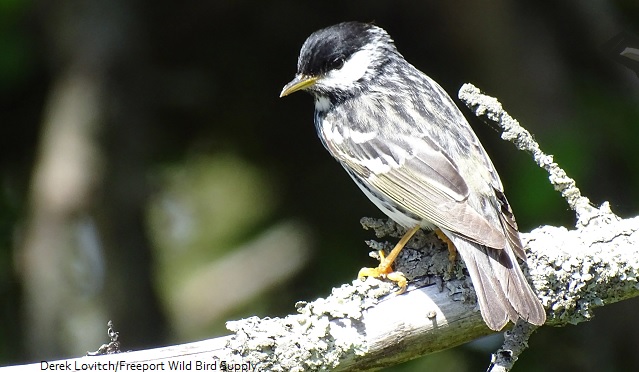I’m an outdoors person, which is one reason that I’m a Big Fan of the NYS Adirondacks (see this great short video). That said, I’m not an ornithologist, so (like most people) I do not pay sufficient attention to some amazing things going on right under our noses. Here are two simple examples…
Northern Mockingbird —
Every Spring, a mockingbird comes to make a nest in the shrubbery right outside my NC coastal “office.” (This is our enclosed porch overlooking the Newport River, as I like water views.)
The mockingbird is pretty, and flies back and forth putting its nest together. Every so often, it takes a break and finds a comfortable perch to look over its handiwork. That’s when something startling happens — it starts to sing.
Almost all birds have one type of sound they make. For example, a crow does something like “Caw, Caw”. Not the mockingbird! It starts out with a melodic sound (like Chee, Chee, Chee). Then it makes a completely different sound. Then a third. Then a fourth. Then a fifth. Then a sixth! All of these are VERY different from each other. Here is a short video that gives some idea…
If that wasn’t enough, these birds actually have the ability to mimic other sounds like a car alarm, construction noise, some human sounds, etc… Here’s a good explanation of why they do all this…
Blackpoll Warbler —
Here is Audubon’s info page on this fascinating bird. This is a better text explanation. What it says, in part:
Monarch butterflies spend generations migrating across the entire North American continent, and humpback whales log as many as 3,000 miles a month as they go between Alaska and Hawaii. But as impressive as they are, these charismatic critters have nothing on the Blackpoll Warbler—an unassuming bird with one of the most ambitious migration routes on the planet.
This warbler may not be much to look at—its striking bright white-and-black pattern is dulled by the olives, grays, and yellows that make up its fall and winter plumage. The bird is also lighter than an empty soda can—an average adult weighs in at just 12 grams. But new research confirms that these small creatures undertake one of the longest and most impressive migrations of the animal kingdom.
These birds take migrating to an extreme: Once they leave their breeding areas, they fly continuously for three days straight over the Atlantic Ocean before having a chance to stop in Colombia or Venezuela… To make the trek, the birds nearly double their weight before their non-stop flight.
The tiny songbirds fly over the western Atlantic, wings buzzing at 20 flaps a second. They ultimately make landfall (some three to four days later, after a 2000± mile nonstop flight) after roughly 3± million wing-flaps!
All this is done with no stops for rest, no stops for food, no stops for water…
Simply amazing!
Here is a short video about them:
Every so often it’s a good idea to take a break from our busy lives and sit back and smell the roses — and watch (and listen to) some birds…
©2025 John Droz, Jr. All rights reserved.
Here is other information from this scientist that you might find interesting:
I am now offering incentives for you to sign up new subscribers!
I also consider reader submissions on Critical Thinking on my topics of interest.
Check out the Archives of this Critical Thinking substack.
WiseEnergy.org: discusses the Science (or lack thereof) behind our energy options.
C19Science.info: covers the lack of genuine Science behind our COVID-19 policies.
Election-Integrity.info: multiple major reports on the election integrity issue.
Media Balance Newsletter: a free, twice-a-month newsletter that covers what the mainstream media does not do, on issues from COVID to climate, elections to education, renewables to religion, etc. Here are the Newsletter’s 2025 Archives. Please send me an email to get your free copy. When emailing me, please make sure to include your full name and the state where you live. (Of course, you can cancel the Media Balance Newsletter at any time – but why would you?
The post Two Amazing Birds — Critically Thinking about some phenomenas in nature… appeared first on Dr. Rich Swier.
Click this link for the original source of this article.
Author: John Droz, Jr.
This content is courtesy of, and owned and copyrighted by, https://drrichswier.com and its author. This content is made available by use of the public RSS feed offered by the host site and is used for educational purposes only. If you are the author or represent the host site and would like this content removed now and in the future, please contact USSANews.com using the email address in the Contact page found in the website menu.








